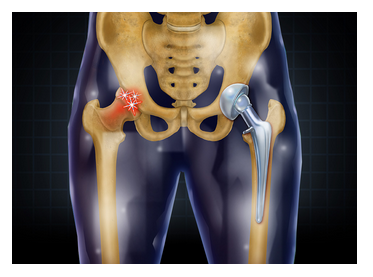- Home
- Editorial
- News
- Practice Guidelines
- Anesthesiology Guidelines
- Cancer Guidelines
- Cardiac Sciences Guidelines
- Critical Care Guidelines
- Dentistry Guidelines
- Dermatology Guidelines
- Diabetes and Endo Guidelines
- Diagnostics Guidelines
- ENT Guidelines
- Featured Practice Guidelines
- Gastroenterology Guidelines
- Geriatrics Guidelines
- Medicine Guidelines
- Nephrology Guidelines
- Neurosciences Guidelines
- Obs and Gynae Guidelines
- Ophthalmology Guidelines
- Orthopaedics Guidelines
- Paediatrics Guidelines
- Psychiatry Guidelines
- Pulmonology Guidelines
- Radiology Guidelines
- Surgery Guidelines
- Urology Guidelines
New Implant reduces rate of revision surgery in hip replacement

The use of cross-linked polyethylene (XLPE) in hip implant has resulted in a significant reduction in the rate of revision surgery after total hip replacement, according to a study published in The Journal of Bone & Joint Surgery.
This evidence suggests that the longevity of total hip arthroplasty (THA) is likely to be improved, which may enable younger patients to undergo surgery with reduced need for revision in the long term.
Total hip arthroplasty is an effective operation for the management of end-stage hip osteoarthritis but due to the wear of the polyethylene bearing surface. long-term success is limited. Cross-linked polyethylene bearing surfaces were developed to address the problem of wear occurring with hip components made with conventional polyethylene (CPE). Excessive wear sometimes leads to the need for revision surgery, particularly in younger, more active patients. Cross-linking is a process by which the polyethylene molecules are bonded together to strengthen the material.
Steiger and his associates conducted a study to compare the rates of revision between cross-linked polyethylene (XLPE) and conventional non-cross-linked polyethylene (CPE) at 16 years after THAs performed for the treatment of osteoarthritis.
"The use of XLPE has resulted in a significant reduction in the rate of revision at 16 years following total hip arthroplasty for osteoarthritis," writes Professor Richard de Steiger, MBBS, FRACS, FAOrthA, and colleagues of the Australian Orthopaedic Association National Joint Replacement Registry, Adelaide, South Australia.
"With less wear and better longevity than implants using conventional polyethylene (CPE) components, the superior durability of XLPE implants may encourage total hip replacement to be performed in younger patients," he added.
Read ALso: Hip Fracture Patients: Alendronate reduces CVD risk, says Study
The authors performed an observational study of data and compared the outcomes of THAs performed with non-cross-linked polyethylene (CPE) with those of THAs performed with XLPE, along with an analysis of the effect of age, sex, femoral head size, the method of acetabular and femoral component fixation, and the reasons and types of revision.
The study found that as early as six months after hip replacement, revision rates were substantially lower in patients with XLPE bearings. Over 16 years, the cumulative rate of revision surgery was 11.7 percent in the CPE group compared to 6.2 percent in the XLPE group.
After adjustment for other risk factors, patients with CPE implants were about three times more likely to have revision surgery after nine years, compared to those with XLPE implants. Revisions directly related to the wearing of the bearing surface occurred in 0.81 percent of procedures that used CPE versus 0.05 percent of procedures that used XLPE.
A subgroup analysis focused on approximately 18,000 patients who underwent total hip arthroplasty before age 55 found that the 15-year cumulative rate of revision was 17.4 percent in the CPE group versus 6.6 percent in the XLPE group. At seven years, younger patients with CPE hip prostheses were about five times more likely to need revision surgery.
The study concluded that the longevity of THA with XLPE is likely to be improved, compared with that of THA with CPE, beyond 16 years and may enable younger patients to undergo THA confident of a reduced need for revision in the long term.

Disclaimer: This site is primarily intended for healthcare professionals. Any content/information on this website does not replace the advice of medical and/or health professionals and should not be construed as medical/diagnostic advice/endorsement or prescription. Use of this site is subject to our terms of use, privacy policy, advertisement policy. © 2020 Minerva Medical Treatment Pvt Ltd